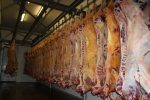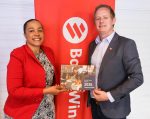It is becoming increasingly difficult for Agribank to source affordable capital and on-lend to the agriculture sector at affordable rates, the Bank has said in its latest quarterly economic outlook report.
The Bank further noted that this prompts the need for the Bank to continuously engage stakeholders and shareholders for funding support and risk-sharing instruments such as guarantees.
“Unfavourable climatic conditions remain a key risk to the performance of the agriculture sector and the Bank in terms of collection and loan book growth, hence there is need for Agribank to continuously exploring opportunities for innovative financing and non-financial support services to the clients.
“On the other hand, farmers are encouraged to prepare for the worst-case scenarios, ramp up diversification strategies and production technologies to mitigate the impact of climate change and unleash opportunities in the food system,” said the Bank.
Elevated inflationary pressures coupled with monetary policy increases has damped economic growth globally. This is amidst ongoing geopolitical tensions, fading pent-up demand, low disposable income amongst others. Global growth is expected to soften with rising possibilities of a recession in certain economies. Namibia is no exception as growth is expected to drop to 2.7% in 2023 compared to 4.6% recorded in 2022.
“Locally, monetary policy tightening amidst weak economic environment is raising fears of reduced business and consumer confidence globally and in Namibia. Interest rates in Namibia increased by 350bps since January 2022, the fastest increase ever recorded in the past two decades, exerting further pressure on household spending and increasing the cost of financing for businesses and institutions,” the Bank further said.
The agriculture sector grew by 2.6% in 2022 compared a 1.3% in 2021. The improvement of the sector was driven by a moderate increase in the livestock farming and fishing sub-sectors that recorded growth of 1.2% and 2.3%, respectively. The crop sub-sector recorded a negligible growth rate of 4.5% in 2022 compared to 5.5% in the prior year. Furthermore, the sector is expected to remain at low levels during 2023 and 2024, mainly due to inconsistent rainfall patterns and broadly unchanged fishing quotas in 2023.
On the other hand, the number of cattle marketed in 2022 stood at 183 000, an increase of 4.3% compared to 2021. The increase in the number of cattle marketed emanated from better grazing conditions in 2022 coupled with improved beef prices. Small stock marketed surged by 36% to 707,894 in 2022 compared to 519,167 in the prior year.
“Dire climatic conditions remain a threat to the outlook, hence the looming drought may lead to further increases in the number of livestock marketed, to avoid losses to drought and reduce pressure on grazing land. Furthermore, rangeland continues to deteriorate during March 2023 as dry conditions persist,” the Bank explained.
Beef and sheep producer prices continue to be elevated with beef export prices averaging at N$60.15 per kg in 2022 compared to N$52.51 per kg in 2021. Sheep producer prices averaged at N$60.56 per kg in 2022 upwards, compared to N$58.89 in the prior year. Contrary to rising beef and sheep producer prices, the weaner prices declined by 6.0% to N$37.6 per kg in 2022 compared to N$39.89 per kg in 2021. The reduction in weaner prices could be attributed to increased demand for weaner exports to South Africa.
With regards to crop production, the Bank said: “We observed an increase in the controlled crops production to 33 918 tons in the 4Q2022 compared to 23 596 metric tons recorded in the corresponding quarter of 2021. Due to the impact of the Ukraine war on the crop markets, we further observed an increase in the price for white maize to N$7 228 per ton in the 4Q2022 compared to N$4 819 per ton in the 4Q2021.
Domestic production of wheat increased to 24 084 tons in the 4Q2022 compared to 17 789 tons in the preceding year. Similarly, to white maize, the price for wheat skyrocketed to N$ 8 105 per ton in the 4Q2022 compared to N$6 771 in the 4Q2021.”










